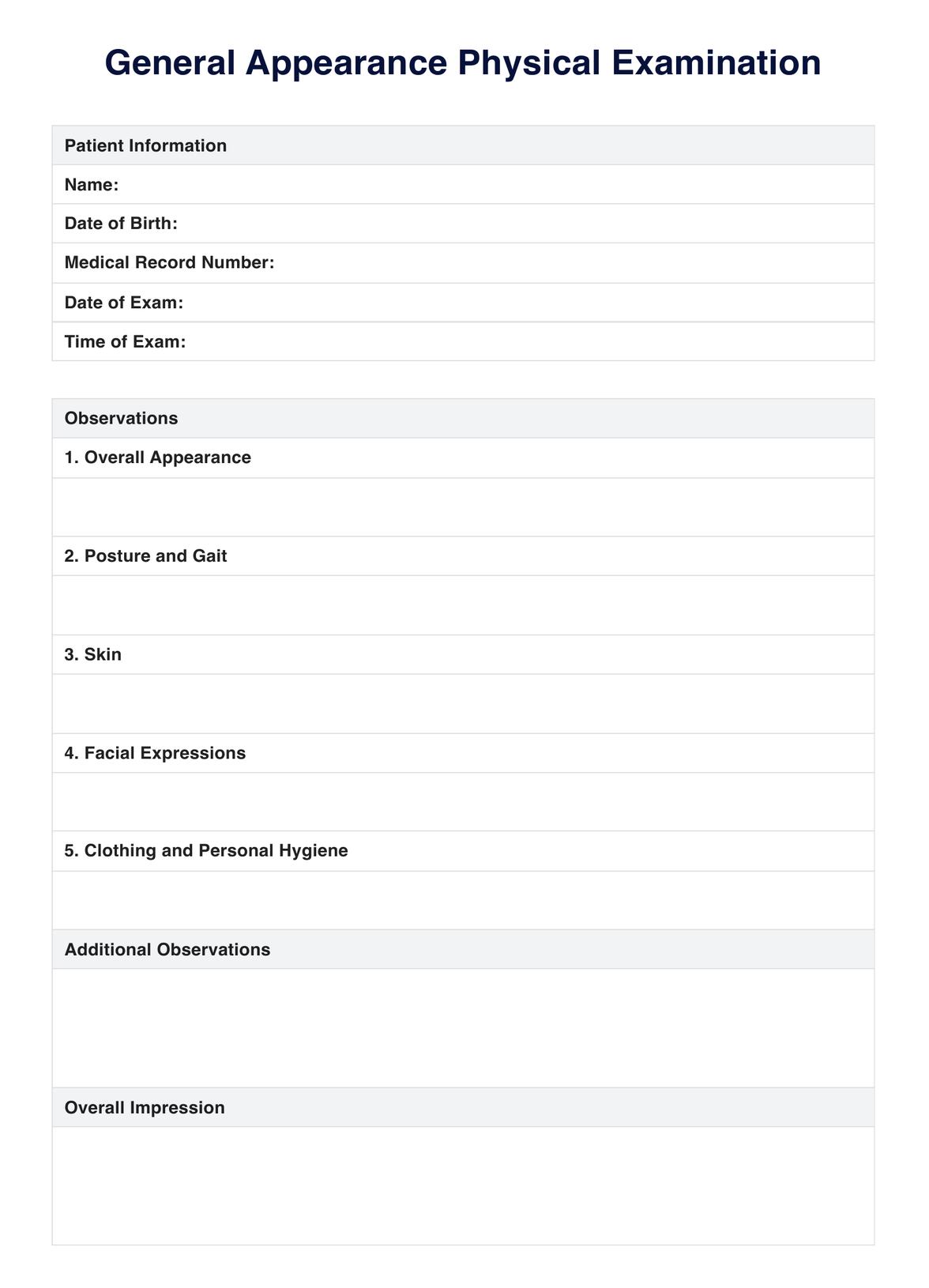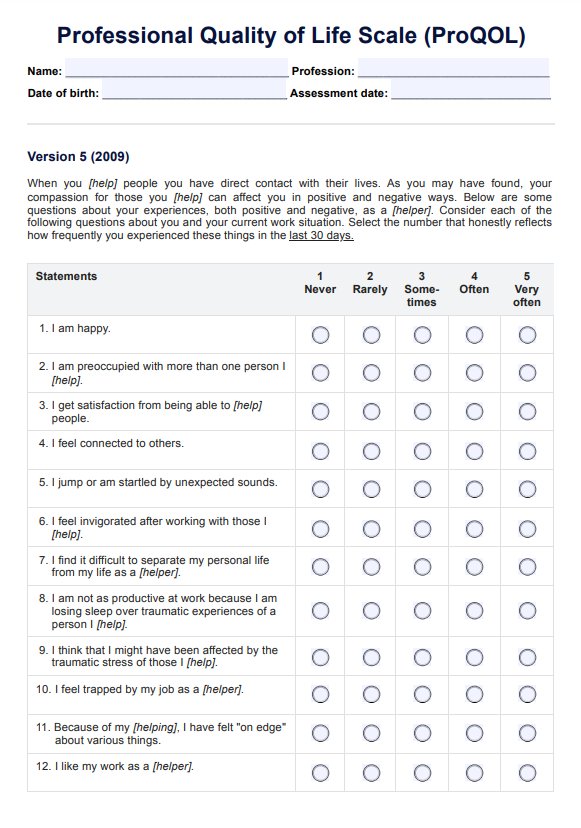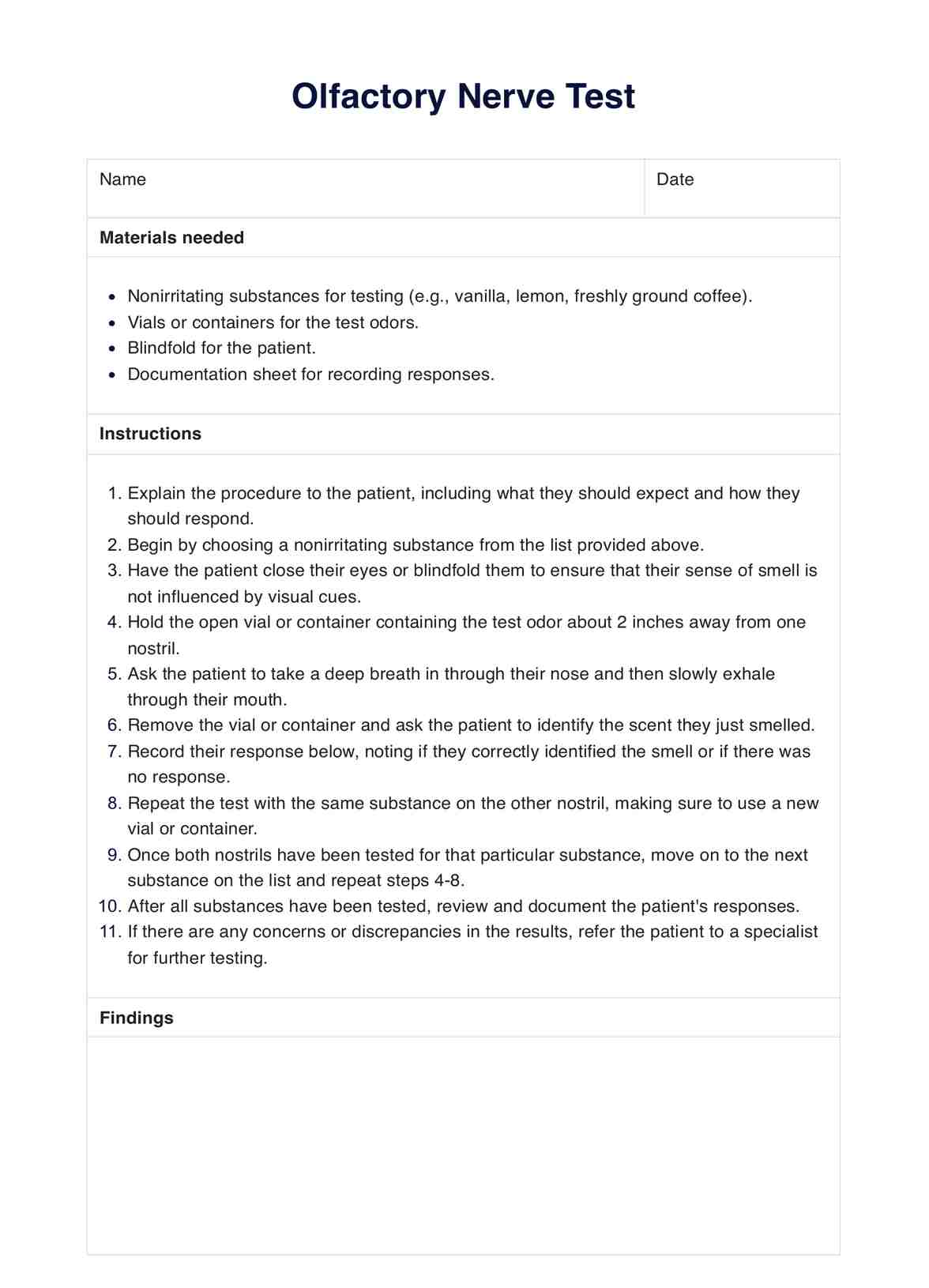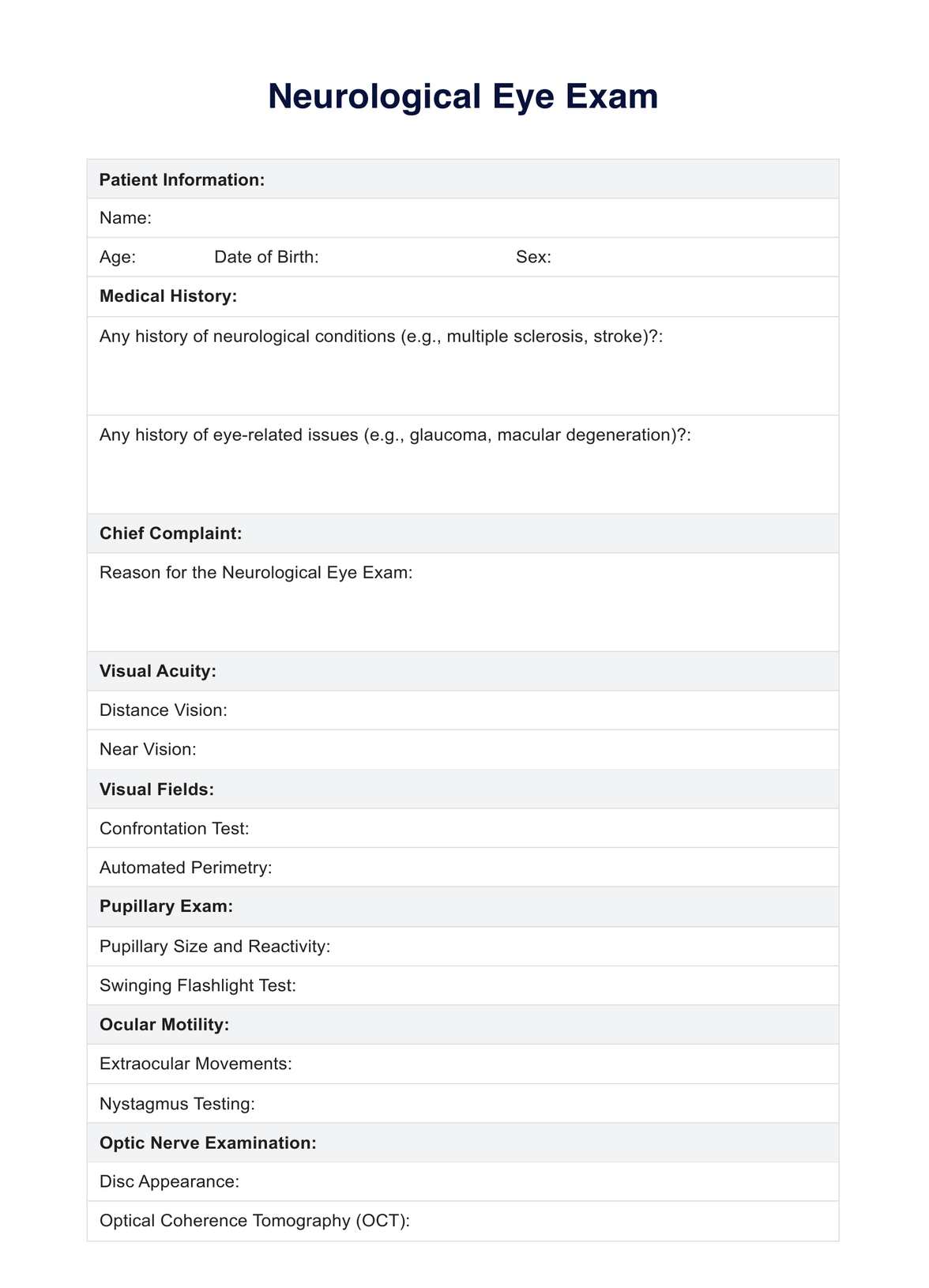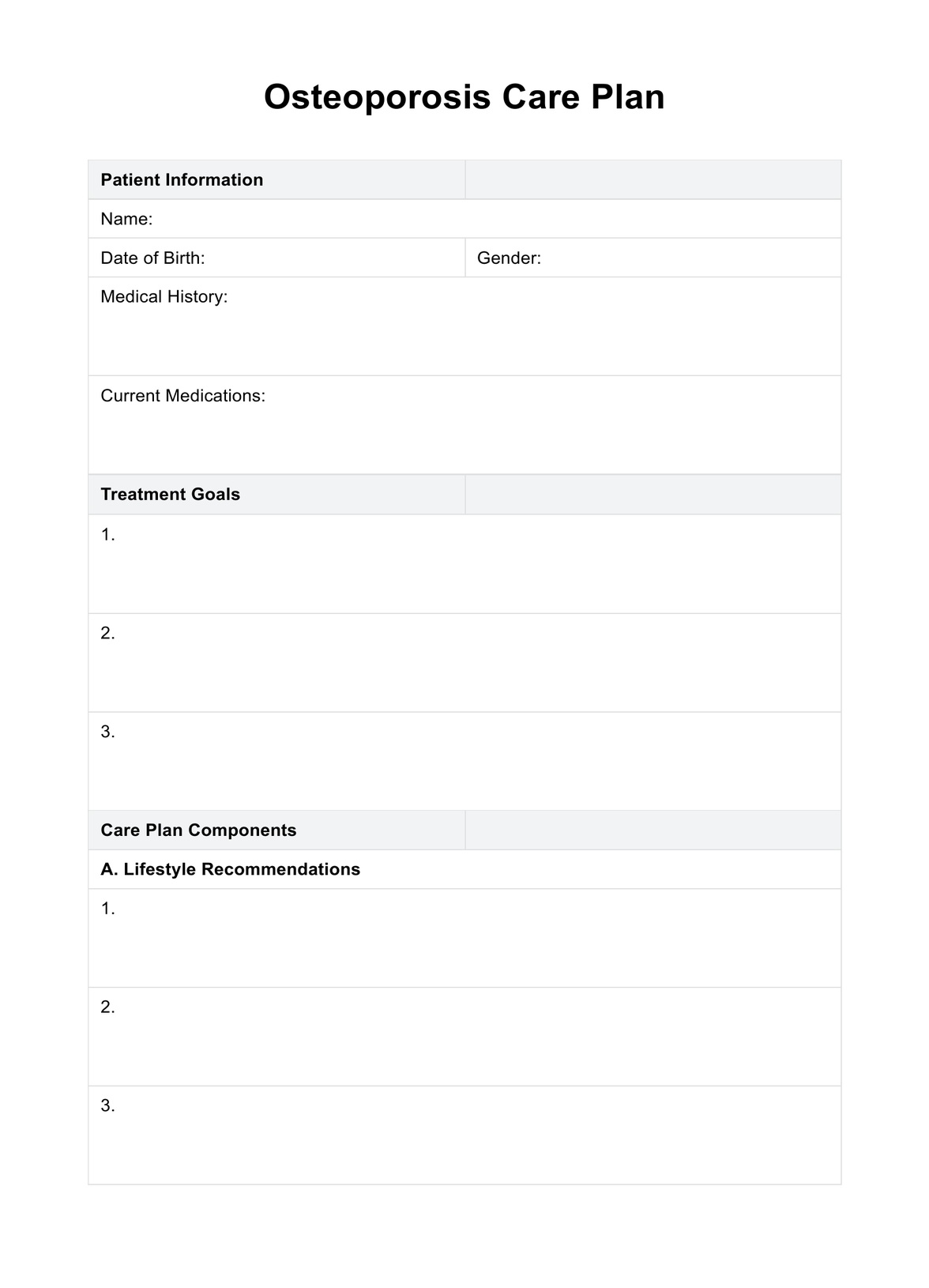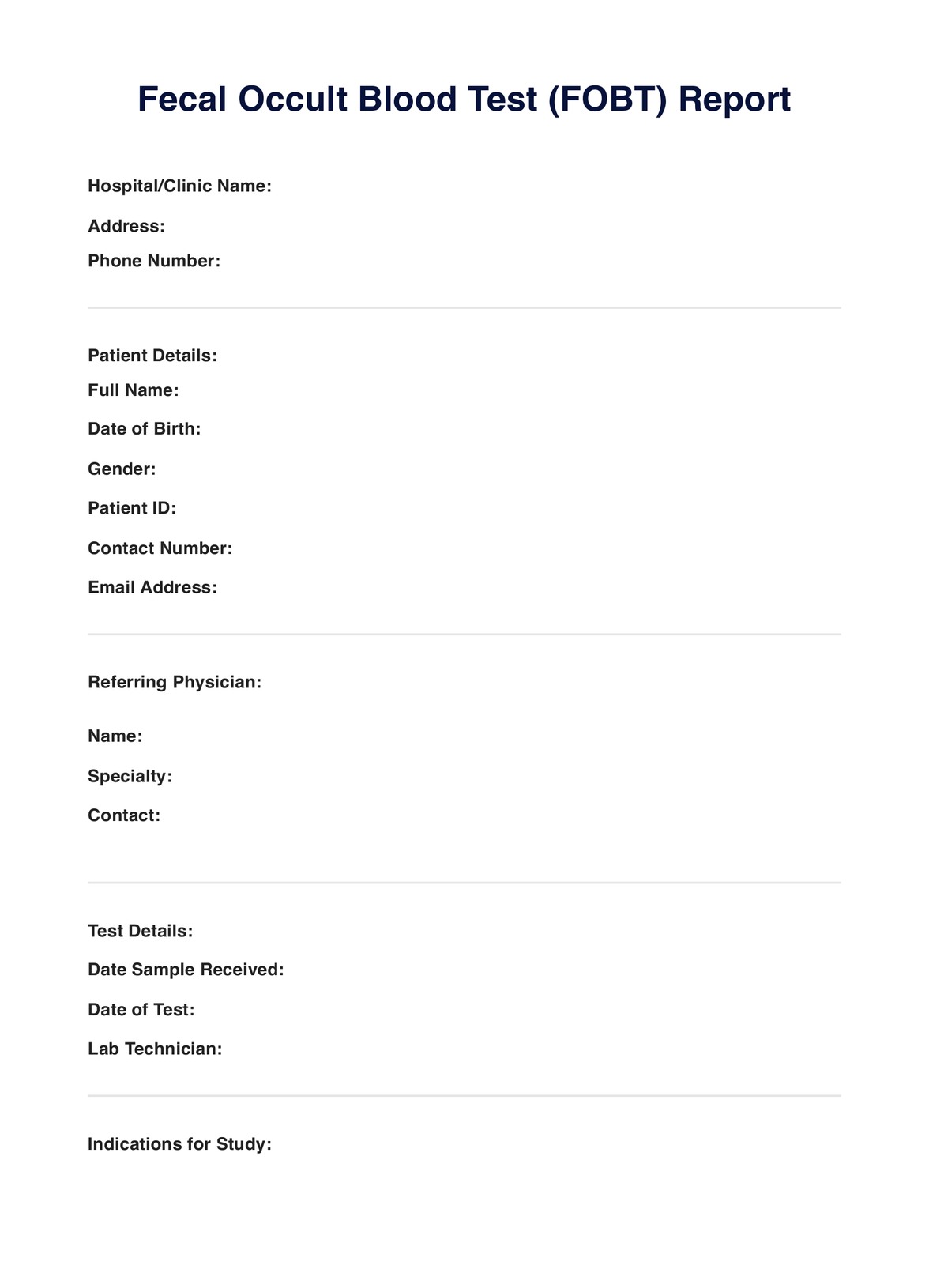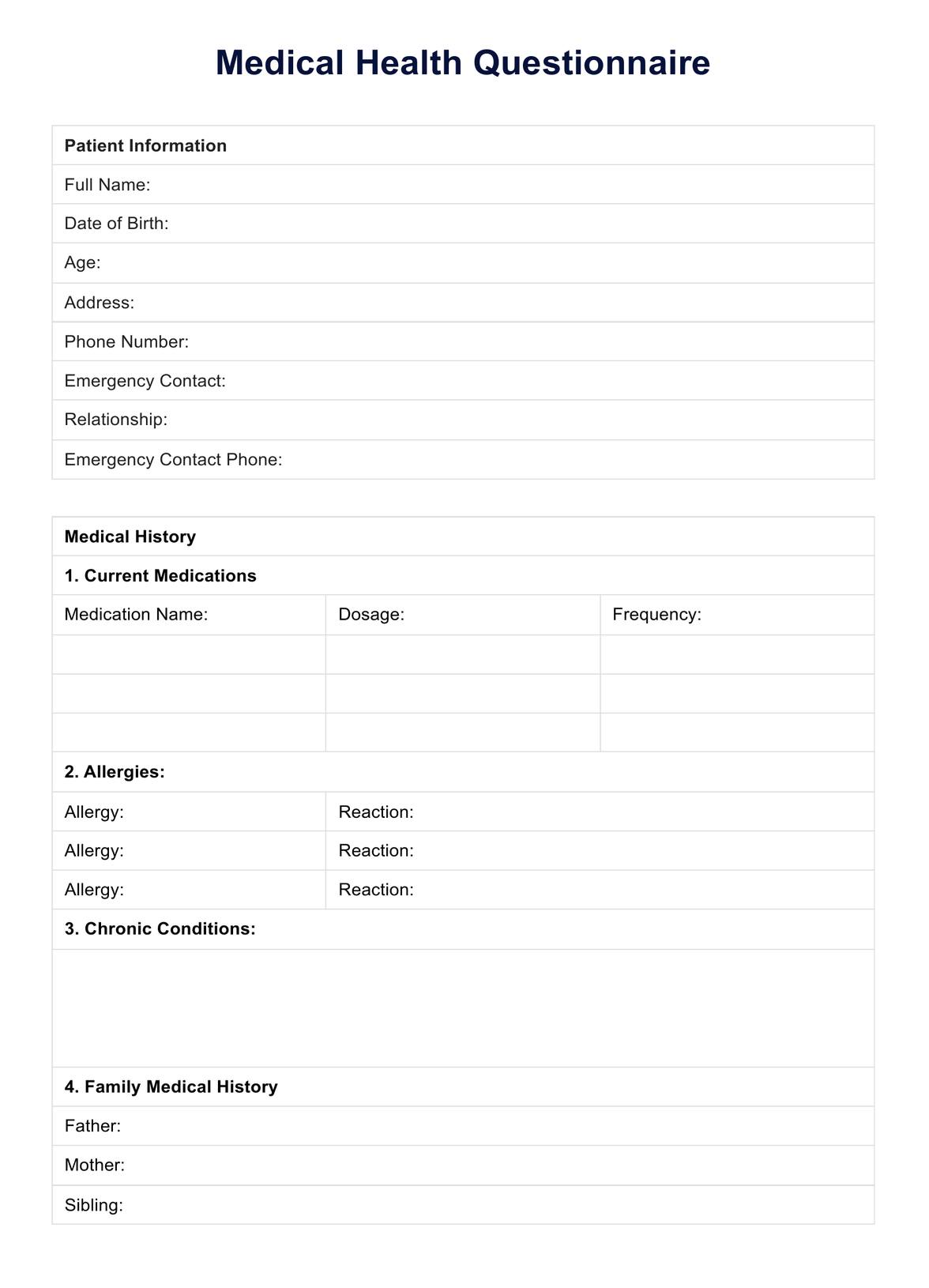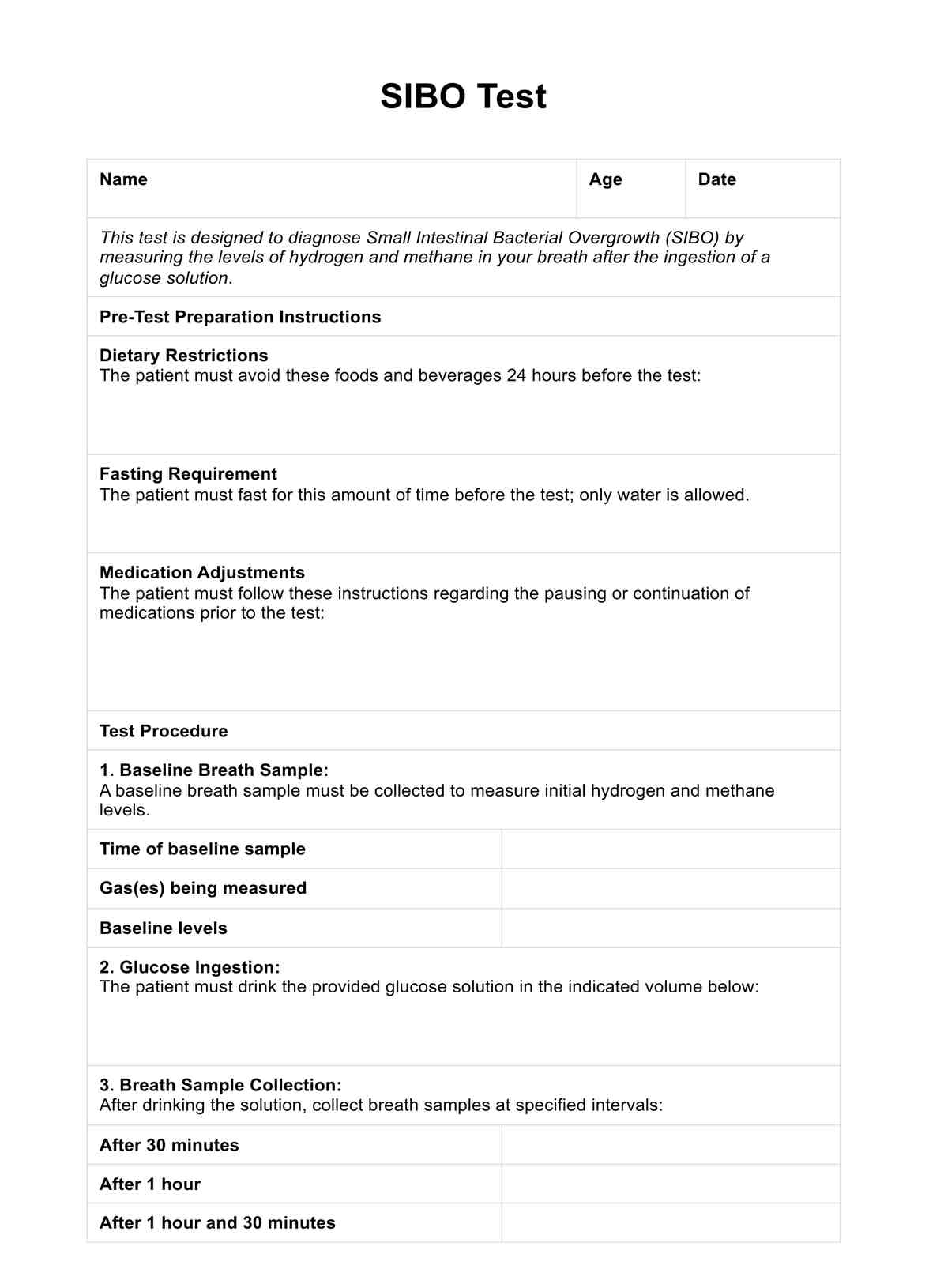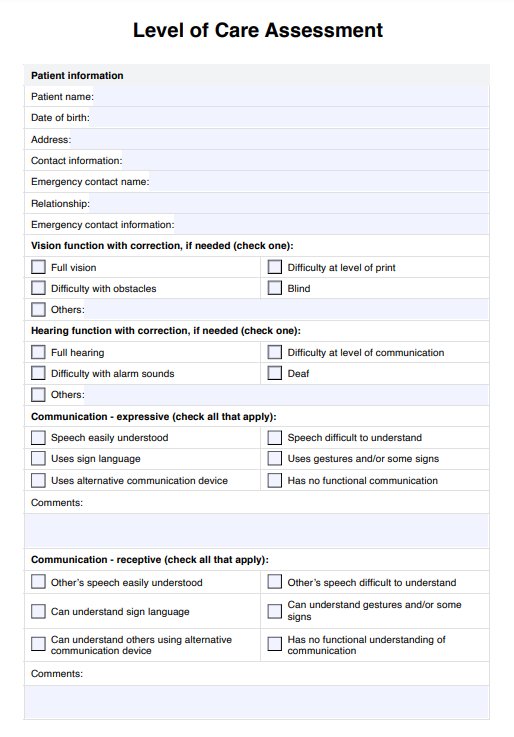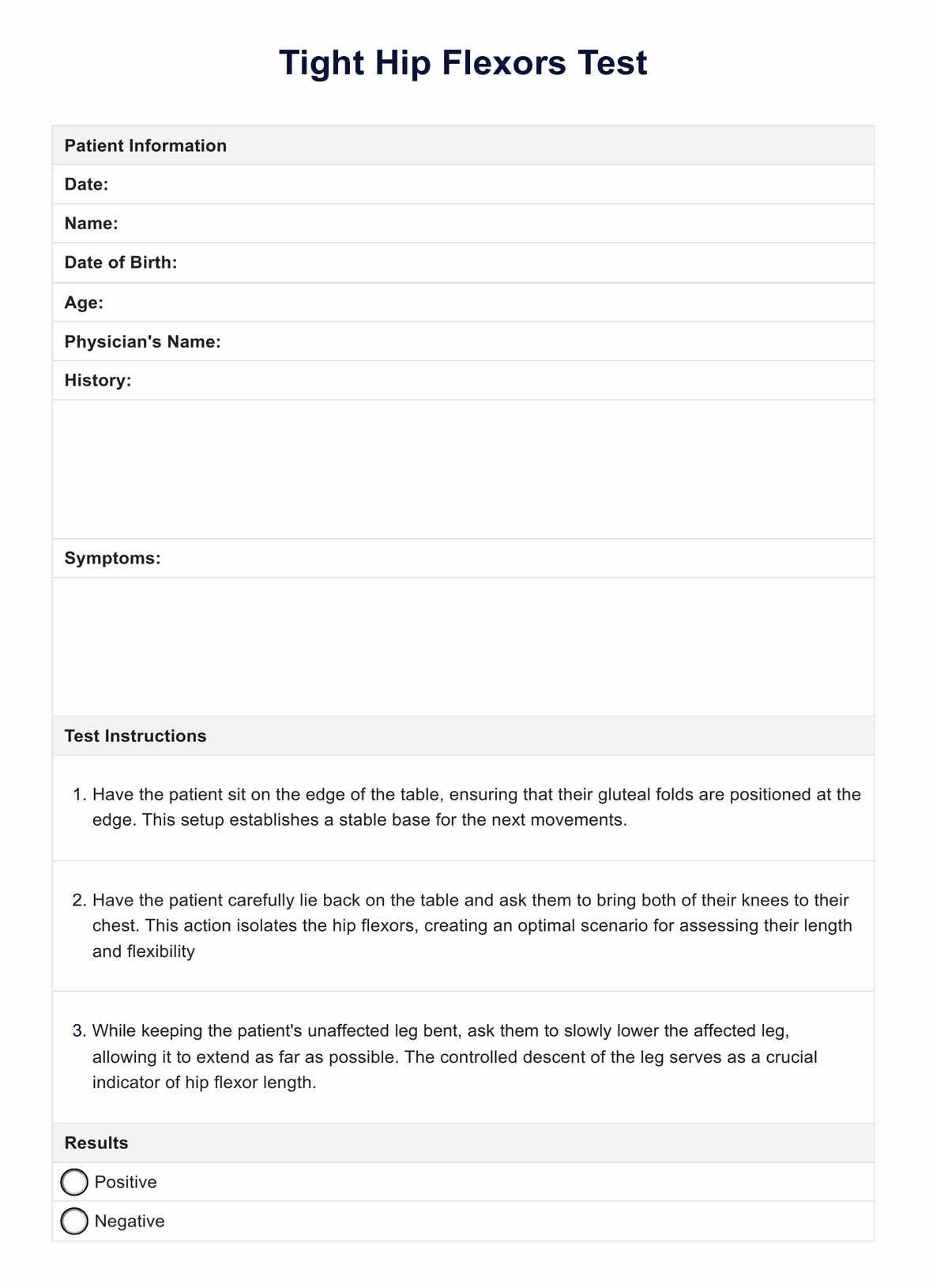General Appearance Physical Exam
Master the art of assessing health at a glance with the General Appearance Physical Exam – your key to well-being evaluation.


What is a General Appearance Physical Exam?
A General Appearance Physical Exam is a healthcare professional's first assessment during a Normal Physical Exam. Before obtaining a patient's history, vital signs like blood pressure and heart rate, and reviewing the medical history, they must first evaluate a patient's general appearance, which involves observing the following visible indicators:
- Color and texture of skin: Changes in skin color may indicate circulatory issues, nutritional deficiencies, or dermatological conditions. Altered skin texture can suggest dehydration, certain skin diseases, or metabolic disorders.
- Facial expressions: Facial expressions can reveal signs of pain, discomfort, or emotional distress. Asymmetry or drooping may indicate neurological issues or facial nerve dysfunction.
- Posture and gait: Observing the patient's posture and gait provides insights into musculoskeletal and neurological function. Abnormalities may signal pain, weakness, or coordination problems.
- Hygiene and grooming: Poor hygiene or unkempt appearance may raise concerns about the patient's ability to care for themselves and may indicate underlying health issues.
- Clothing choices: The type and condition of clothing can offer information about socioeconomic status, personal care habits, and potential psychological factors.
- Signs of distress: Agitation, restlessness, or signs of respiratory distress can be visually assessed and guide further focused examinations.
Considering visible indicators as part of the general appearance assessment allows healthcare professionals to comprehensively understand the patient's health. This assessment process provides valuable clues that can direct the physical exam toward specific areas of concern.
General Appearance Physical Exam Template
General Appearance Physical Exam Example
Understanding the indicators of general appearance
As mentioned, visible indicators in the patient's overall appearance are highly relevant to a physical assessment. These indicators provide valuable information that aids healthcare professionals in assessing various aspects of the patient's health. Here's an overview of the different indicators, possible observations, and their corresponding interpretations:
Observed posture and movements
In a general appearance exam, observed posture and movements are pivotal in forming an initial impression of a patient's overall health. The healthcare professional assesses whether these observed aspects align with expectations based on established norms and indicators of well-being.
Posture is critical, as deviations from the expected upright stance may indicate discomfort, pain, or musculoskeletal issues. Movements, including gait and coordination, are observed to ensure they are within the typical range and free from abnormalities. In a comprehensive general appearance examination, healthcare providers consider factors such as smoothness of movements, symmetry, and any signs of distress.
Aligning observed posture and movements with expectations involves comparing the patient's presentation to established benchmarks for their age, condition, and the specific context of the examination. Variations from the norm may trigger further targeted assessments in relevant areas, such as musculoskeletal or neurological exams.
Skin color and condition
Skin color and condition are crucial in assessing a patient's general appearance. These visual cues offer valuable insights into various health aspects and can indicate underlying conditions. Examining skin color and condition is a fundamental component of a comprehensive general appearance assessment.
For skin color, here are the corresponding indications based on observations:
- Pallor: Paleness may suggest anemia or circulatory issues.
- Cyanosis: Bluish tint may indicate poor oxygenation or cardiovascular problems.
- Jaundice: Yellowing may point to liver or gallbladder concerns.
- Erythema: Redness may signify inflammation or infection.
Meanwhile, for skin conditions, here are the corresponding interpretations based on what one may observe:
- Texture: Changes may indicate dermatological issues or nutritional deficiencies.
- Moisture: Dryness or excessive sweating may be linked to metabolic or endocrine disorders.
- Lesions or rashes: Presence can aid in diagnosing skin diseases or allergic reactions.
- Edema: Swelling may suggest underlying fluid retention or cardiovascular problems.
Analyzing skin color and condition assists healthcare professionals in identifying potential issues across various body systems. This focused assessment complements the entire process, guiding the healthcare provider to focus on specific areas such as dermatological exams, circulatory assessments, or nutritional interventions.
Choice of clothing
Yes, the patient's choice of clothing is relevant to evaluating general appearance in a comprehensive examination. Clothing can provide valuable information about the patient's care, socioeconomic status, and potential psychological factors. Here are some considerations:
- Personal care and grooming: Well-groomed and appropriately dressed individuals often give off an impression of good personal care habits. However, an unkempt appearance or inappropriate clothing choices might raise concerns about the patient's overall well-being or mental health.
- Socioeconomic status: The type and condition of clothing can offer insights into the patient's socioeconomic background. Discrepancies between expected and observed attire may indicate financial struggles or cultural factors affecting choices.
- Psychological factors: It's worth noting that a person's clothing choices can sometimes reveal a lot about their emotional state or mood. When someone wears unusual or mismatched clothing, it could be a subtle sign of cognitive or psychiatric issues that may be worth exploring.
Considering clothing as part of an accurate assessment allows healthcare professionals to gather additional contextual information, contributing to a more holistic understanding of the patient. However, it's important to interpret these observations with sensitivity, recognizing that cultural, personal, or financial factors can influence clothing choices.
Grooming and personal hygiene
Grooming and personal hygiene significantly impact the assessment of general appearance in a comprehensive examination. These aspects provide valuable insights into an individual's well-being, self-care habits, and potential underlying health issues. Here are key considerations:
- Self-care and well-being: Individuals who maintain good personal hygiene and grooming habits tend to positively approach self-care and overall health. On the other hand, poor grooming habits may raise concerns about a person's ability to manage daily activities and, in some cases, indicate potential mental health issues.
- Signs of neglect: Unkempt hair, body odor, or dirty clothing may suggest neglect or self-neglect, prompting further investigation into the patient's living conditions or mental health.
- Skin and nail conditions: The condition of the skin and nails can reflect hygiene practices and may reveal dermatological issues or nutritional deficiencies.
- Communication and trust: A well-groomed appearance can positively influence the patient-provider relationship, fostering trust and effective communication. Conversely, a lack of personal hygiene may impact the quality of interactions and hinder rapport.
Demeanor
The patient's demeanor plays a pivotal role in shaping the overall impression during a physical exam, contributing valuable insights that complement objective measurements such as vital signs, respiratory rate, and cardiovascular assessment. As a healthcare professional assesses the patient, the individual's behavior, expressions, and general mannerisms become integral to a focused examination.
Observing the patient's demeanor aids in determining the level of distress or comfort, potentially revealing underlying pain or discomfort not easily captured by vital signs alone. For instance, subtle facial grimaces or changes in posture may indicate areas for further musculoskeletal examination. Additionally, as reflected in their demeanor, the patient's emotional state can provide clues about their mental well-being, potentially influencing their overall condition.
Commonly asked questions
The overall impression of the patient's physical state, including body habitus, posture, grooming, and signs of distress.
Record observations systematically, noting body build, grooming, posture, and any notable signs of distress or abnormalities.
A quick, comprehensive assessment of the patient's overall physical condition, encompassing appearance, behavior, mobility, and distress.


